+ Q&A with writer-director Guillermo del Toro
This glorious adaptation of Florentine writer Carlo Collodi’s 1883 book The Adventures of Pinocchio is a striking, often breathtakingly beautiful synthesis of stop-motion animation and virtuoso visual effects. Del Toro and co-writer Patrick McHale bring the timeline of the story forward, to Mussolini’s Italy, creating an allegory of a repressive society that ranks alongside the Mexican auteur’s Franco-era Spanish dramas The Devil’s Backbone and Pan’s Labyrinth. It’s a superb achievement. This screening is presented as a tribute to Mark Gustafson.
Guillermo del Toro’s Pinocchio
Humanity may be made of crooked timber, but in Guillermo del Toro’s take on Carlo Collodi’s 1883 children’s classic, it’s the attempt to force us straight that does the damage. Del Toro’s errant wooden boy – lovingly conceived and nurtured into the world over most of two decades by the Mexican director, modelled on Gris Grimly’s illustrations for a 2002 edition of the book – is a natural free spirit, a born-wild child with stick limbs, a rosette of carved hair, open, unvarnished features and a nose for trouble. Where other characters in the film see a potential model Italian youth, or a ticket to riches, or even a surrogate son, del Toro gives us a puckish innocent driven by curiosity and affection, whose need to become ‘real’ is an embrace of love, loss and mortality. Around him, the film condenses Collodi’s picaresque fable as a helter-skelter tumble through the perils of patriarchy and fascism in a 1930s Italy rife with false idols and warped father figures.
For all the 20-plus film versions of Collodi’s story of an animated puppet – including at least four in the last three years, with two of those in as many months – del Toro is right to express surprise (and delight) that none have turned to stop-motion puppet animation for the task. He shares directing credit with Mark Gustafson, the director of animation on Wes Anderson’s stop-motion Fantastic Mr. Fox (2009); the armature puppets were made by Manchester animation house Mackinnon & Saunders (who also supplied Fantastic Mr. Fox, as well as Tim Burton’s Corpse Bride, 2005, and Frankenweenie, 2012); and the animation was performed by Portland’s ShadowMachine, with supplementary work by del Toro’s Centro Internacional de Animación in Guadalajara. Ambition, cutting-edge skills and a thousand-odd days of shooting have produced a marvellously rich and lively calibre of animation, a soaring interplay of lighting and camerawork and puppetry that raises the bar for the expression of character and action in this style.
What’s surprising – though it’s perhaps an obvious corollary – is that the switch to stop-motion means that Pinocchio really isn’t so different to his animated maker and neighbours: they’re all the same matter under the surface, though the bare-wood Pinocchio doesn’t get to hide it. Little wonder, then, that del Toro makes Pinocchio’s birth scene rhyme with that of Frankenstein’s monster, similarly unholy progeny. As with Robert Zemeckis’s algorithmically ordained reanimation of Disney’s Pinocchio starring Tom Hanks (which premiered on Disney+ in September), del Toro’s film opens elaborating a back story in which Pinocchio’s carpenter father Master Geppetto (David Bradley) is wracked by grief for a real lost son (clear-throated Gregory Mann, who also voices Pinocchio), killed in a senseless act of violence at the end of World War I. One stormy night, a sozzled Geppetto lets fly at an oak tree on his grounds, dragging its trunk into his workshop for some angry woodwork before collapsing asleep, whereupon, in one of the film’s looser bits of exposition, floaty-eyed spirits coalesce into the blue-fairy Wood Sprite to give the boy life. (This being a film about surrogates and doppelgangers, both Sprite and her underworld sister, the griffin-like Angel of Death, are voiced by Tilda Swinton – adding another to her portfolio of double acts to follow Hail, Caesar!, 2016; Okja, 2017; and The Eternal Daughter, 2022.)
The townsfolk are of course suspicious of Geppetto’s spirited sprig, though Pinocchio, struck by the church sculpture of a wooden Jesus on his cross, innocently wonders ‘why people love him and not me’ – a succinct shot/countershot beautifully crystallising del Toro’s lapsed Catholicism. But a larger-looming authority figure is the local blackshirt, Podesta (Ron Perlman), who admires Pinocchio’s ‘good Italian wood’ and insists he be sent to school to learn discipline; Pinocchio’s later truancy, however, raises a red flag: he may be a ‘dissident – an independent thinker’. One of del Toro’s masterstrokes is to translate Collodi’s boy-trapping Land of Toys (‘Pleasure Island’ in the Disney adaptation) into a fascist paintball bootcamp – no donkey metaphors required – where no sooner have Pinocchio and Podesta’s put-upon son Candlewick made common cause than they are forced into gladiatorial combat.
Disney’s original 1940 Pinocchio emerged in a world sliding into political savagery and horror. Del Toro’s (like Zemeckis’s, and Matteo Garrone’s 2019 prosthetic-effects version) arrives in an era of rekindled grievance and chauvinism, one in which aspiring tyrants incant lies and the previous president of the US fibbed so incontinently the Washington Post’s Fact Checker felt compelled to invent a ‘Bottomless Pinocchio’ rating. Facing such adult wickedness, del Toro – conjuring the monsters of European fascism a third time after the Spanish-set The Devil’s Backbone (2001) and Pan’s Labyrinth (2006) – upends Collodi’s instructional moralism, in which it’s the wayward Pinocchio who needs civilising restraint. Just twice does Del Toro’s Pinocchio find his tell-tale nose growing (and not straight but branching at all angles; it has to be chopped back down, like del Toro’s Hellboy shaving his horns): the first time in a gush of imagination-flexing, the second a moment of creative deliverance, or big white lies. The small-spirited mendacity of the adult world, by contrast, comes to a point in a diminutive role for a banally murderous Benito Mussolini.
Not that the world of art and entertainment is an escape from cruel vanities. Pinocchio’s pied piper, Count Volpe (Christoph Waltz) – a combination of three Collodi characters: tyrannical circus master Mangiafuoco and tricksters the Fox and the Cat – proves an impresario of the highest duplicity. (He has his own brutalised underling, the monkey Spazzatura, whose grunts and shrieks are given virtuoso expression by Cate Blanchett.) Ewan McGregor’s Sebastian J Cricket, Pinocchio’s would-be guardian and biographer, is also prone to pomp and pontification, though as a dapper yet frequently flattened insect he also marks the film’s intersection of gothic macabre and cartoon levity – he’s del Toro’s most garrulous bug, with his own slapstick powers of revival. Down in the underworld, we also meet death’s-head mafiosi rabbits; above, in the hazardous Mediterranean, we find the monstrous whale and naval mines on the journey home to true familial love. How the film keeps all these plates spinning is a wonder, but the musical numbers, composed by Alexandre Desplat with lyrics by del Toro, Patrick McHale and Roeban Katz, are nimble and witty. Most of all, the film exudes all the joy it preaches, giving and breathing life into its world, then embracing it, in all its wonky wonder.
Nick Bradshaw, Sight and Sound, Winter 2022-23
GUILLERMO DEL TORO’S PINOCCHIO
Directed by: Guillermo del Toro, Mark Gustafson
©: Netflix
a Double Dare You! film
a Shadowmachine production
in association with: The Jim Henson Company
Executive Producer: Jason Lust
Produced by: Guillermo del Toro, Lisa Henson, Gary Ungar, Alex Bulkley, Corey Campodonico
Script Supervisor: Derek Cohen-Copeland
Casting by: Mary Hildago
Screenplay by: Guillermo del Toro, Patrick McHale
Screen Story by: Guillermo del Toro, Matthew Robbins
Based on the book Pinocchio written by: Carlo Collodi
Director of Photography: Frank Passingham
Animation Supervisor: Brian Leif Hansen
Edited by: Ken Schretzmann, Holly Klein
Production Design by: Curt Enderle, Guy Davis
Art Director: Robert DeSue
Music by: Alexandre Desplat
Music Supervisor: Steven Gizicki
Sound Design and Supervision: Scott Martin Gershin
Re-recording Mixers: Jon Taylor, Frank A. Montaño
Voice Cast
Ewan McGregor (Cricket)
David Bradley (Geppetto)
Gregory Mann (Pinocchio and Carlo)
Burn Gorman (priest)
Ron Perlman (Podesta)
John Turturro (Dottore)
Finn Wolfhard (Candlewick)
Cate Blanchett (Spazzatura)
Tim Blake Nelson (black rabbits)
Christoph Waltz (Count Volpe)
Tilda Swinton (wood sprite and Death)
Tom Kenny (Mussolini/right hand man/sea captain)
USA-Mexico 2022©
116 mins
Digital
SIGHT AND SOUND
Never miss an issue with Sight and Sound, the BFI’s internationally renowned film magazine. Subscribe from just £25*
*Price based on a 6-month print subscription (UK only). More info: sightandsoundsubs.bfi.org.uk

BFI SOUTHBANK
Welcome to the home of great film and TV, with three cinemas and a studio, a world-class library, regular exhibitions and a pioneering Mediatheque with 1000s of free titles for you to explore. Browse special-edition merchandise in the BFI Shop.We're also pleased to offer you a unique new space, the BFI Riverfront – with unrivalled riverside views of Waterloo Bridge and beyond, a delicious seasonal menu, plus a stylish balcony bar for cocktails or special events. Come and enjoy a pre-cinema dinner or a drink on the balcony as the sun goes down.
BECOME A BFI MEMBER
Enjoy a great package of film benefits including priority booking at BFI Southbank and BFI Festivals. Join today at bfi.org.uk/join
BFI PLAYER
We are always open online on BFI Player where you can watch the best new, cult & classic cinema on demand. Showcasing hand-picked landmark British and independent titles, films are available to watch in three distinct ways: Subscription, Rentals & Free to view.
See something different today on player.bfi.org.uk
Join the BFI mailing list for regular programme updates. Not yet registered? Create a new account at www.bfi.org.uk/signup
Programme notes and credits compiled by Sight and Sound and the BFI Documentation Unit
Notes may be edited or abridged
Questions/comments? Contact the Programme Notes team by email

